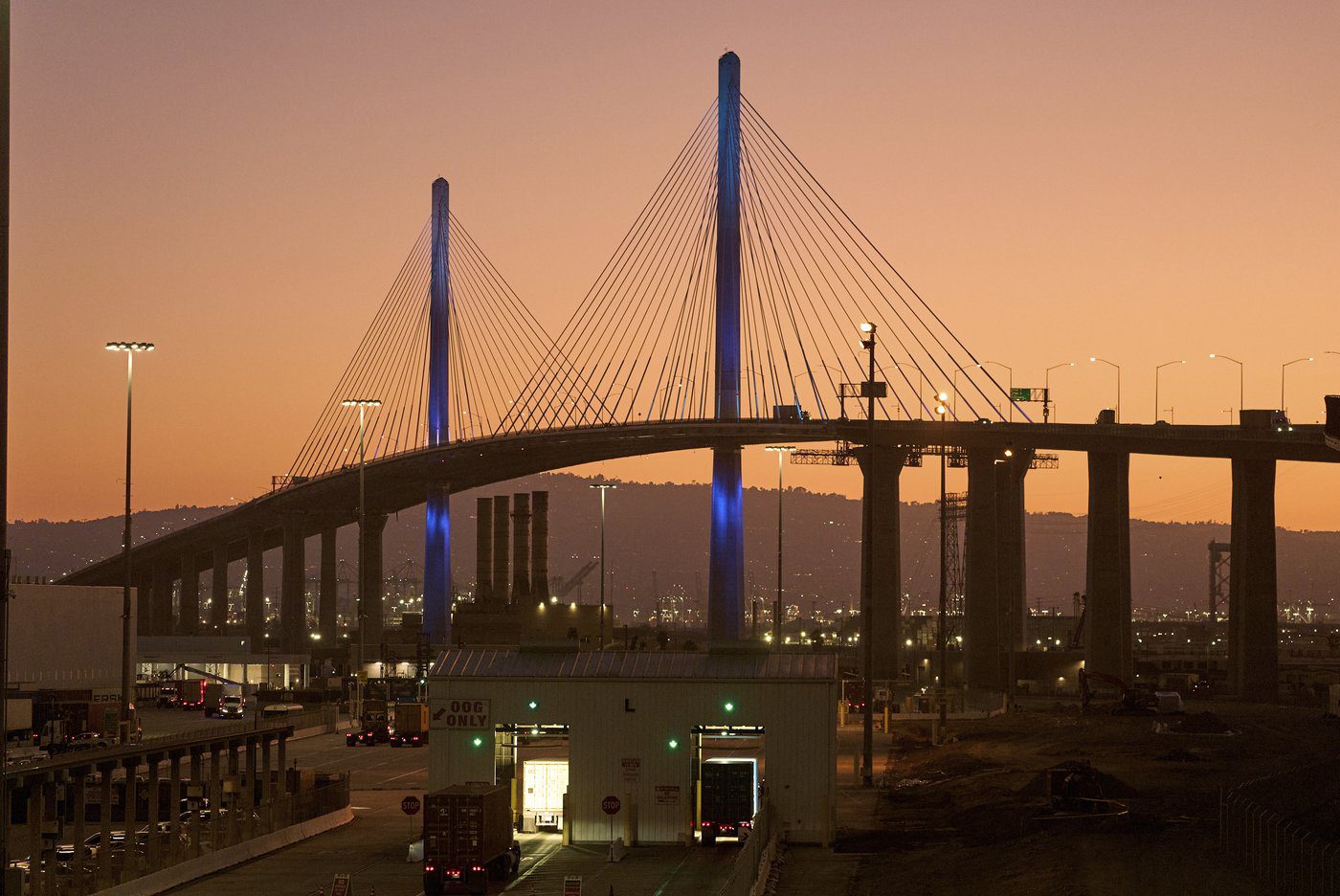American businesses and consumers woke up Friday to find the contours of President Donald Trump’s foreign trade agenda taking shape but without much more clarity on how import taxes on goods from dozens of countries would affect them.
Late Thursday, Trump ordered new tariff rates for 66 countries, the European Union, Taiwan and the Falkland Islands. Among them: a 40% tariff on imports from Laos, a 39% tariff on goods from Switzerland and a 30% tariff on South African products.
Other trade partners, such as Cambodia, had the tax rates on their exports to the U.S. reduced from levels the president had threatened to impose. Trump postponed the start date for all of the tariffs from Friday until Aug. 7.
Wendong Zhang, an associate professor in the Dyson School of Applied Economics and Management at Cornell University, said U.S. consumers may be feeling some relief with the tariff rates announced, since many were lower than Trump initially threatened. Indonesia’s rate was 19%, for example, down from the 32% Trump announced last spring.
But tariffs are a tax, and U.S. consumers are likely to foot at least part of that bill.
“Prices are still going up, they just won’t go up as much as in the worst-case scenario,” Zhang said.
Companies are dealing with tariffs in various ways. Many automakers appear to be swallowing tariff costs for now. But the world’s largest eyewear maker, EssilorLuxottica, said it raised U.S. prices due to tariffs. The maker of Ray-Bans grinds lenses and sunglasses in Mexico, Thailand and China and exports premium frames from Italy.
Here’s what we know about the tariffs and what their impact will be on U.S. consumers:
How we got here
President Donald Trump unveiled sweeping import taxes on goods coming into the U.S. from nearly every country in April. He said the tariffs were meant to boost domestic manufacturing and restore fairness to global trade.
A week later, Trump announced a 90-day pause on the tariffs but did leave in place a 10% tax on most imports. In early July, Trump began sending letters to dozens of countries saying higher tariffs would go into effect Aug. 1 unless they reached trade deals.
The administration announced new rates for dozens of countries on Thursday but delayed their implementation until Aug. 7.
In the meantime, Trump announced a 35% tariff on imports from Canada would take effect Friday. But Trump delayed action on Mexico and China while negotiations continue.
Other duties not specific to countries also remained in place Friday, like a 50% tariff on imported aluminum and steel announced in June.
What tariffs are in place already
The Trump administration has reached deals with the European Union, Japan and South Korea that put 15% tariffs in place. A deal with the Philippines puts 19% tariffs in place while a deal with Vietnam imposes a 20% levy. On Wednesday, Trump announced a 25% tariff on goods from India and a 50% tariff on goods from Brazil.
Tariffs are already impacting prices
The U.S. Commerce Department said Thursday that prices rose 2.6% in June, up from an annual pace of 2.4% in May and higher than the Federal Reserve’s goal of 2%. Many goods that are heavily imported saw price increases, including furniture, appliances and computers.
Zhang, the Cornell economist, said U.S. consumers could see higher prices in the coming months for appliances and other products that contain a large amount of steel and aluminum. Toys, kitchenware, electronics and home goods could also see price spikes.
But Zhang said a 15% tariff doesn’t mean prices will immediately rise by 15%. Companies were aware of the tariff deadlines and have been trying to stockpile goods and take other measures to mitigate the impacts.
Some Americans will see benefits
Zhang noted that Trump’s trade deals often contain specific provisions designed to boost U.S. exports. The agreement with the European Union, for example, calls for European companies to purchase $750 billion worth of natural gas, oil and nuclear fuel from the U.S. over three years.
Zhang said semiconductor firms and military contractors could also see bumps in trade.
Some U.S. farmers could also see a potential upside, Zhang said. As part of its trade deal, Vietnam agreed to purchase $2 billion in U.S. agricultural products over three years, including corn, wheat and soybeans, according to the International Trade Council.
But Zhang cautioned that agricultural agreements tend to be short-lived. Over the longer term, the uncertainty over tariffs could cause countries like China to back away from U.S. agricultural markets and look for other partners, Zhang said.
Food and drink prices will climb
The tariffs will almost certainly result in higher food prices, according to an analysis released this week by the nonpartisan Tax Foundation. The U.S. simply doesn’t make enough of some products, like bananas or coffee, to satisfy demand. Fish, beer and liquor are also likely to see price hikes, the foundation said.
Conagra Brands, the maker of Hunt’s canned tomatoes, Reddi-wip and other brands, said in July that tariffs – particularly the 50% tax on imported aluminum and steel — will add $200 million annually to its costs. The company said it’s shifting some of its suppliers but also expects to raise prices.
Ben Aneff, managing partner at Tribeca Wine Merchants and president of the U.S. Wine Trade Alliance, said that beginning Friday shoppers will see prices rise 20% to 25% at his store and others because of tariffs and the declining value of the dollar.
“Nobody can afford to eat the tariff. It gets passed on,” Aneff said.
Aneff said shoppers haven’t felt the impact from higher duties until now because distributors and retailers accelerated shipments from France and other European countries earlier in the year. But with the tariff rate bumping to 15%, Aneff expects European wine prices to jump 30% in September.
Clothing and shoe prices are already creeping up
Ninety-seven percent of clothing and shoes sold in the U.S. are imported, primarily from Asia, according to the American Apparel & Footwear Association said. China leads the pack, but companies have been shifting more of their sourcing to Vietnam, Indonesia and India.
And prices are already on the rise. Steve Lamar, president and CEO of of the trade group, declined to estimate price increases because he said the situation continues to be in flux. He also said shoppers will see higher costs from tariffs play out in other ways starting this fall. Companies may drop products because they’re too expensive or reduce promotions, he said.
Matt Priest, president and CEO of the Footwear Distributors and Retailers of America, estimates prices for shoes are starting to go up for the back-to-school shopping season. He estimates price increases in the 5% to 10% range.
Lululemon said in June that price increases will be modest and apply to a small portion of its assortment, while Ralph Lauren said it would be hiking prices for this fall and next spring to offset tariffs.
Bjorn Gulden, CEO of Germany-based Athletic wear giant Adidas, told investors Wednesday that the company is reviewing different price increases for products for the U.S. but no decision has been made.
“Tariffs (are) nothing else than a cost,” he said. “And regardless of what people are saying, you can’t just throw a cost away. It’s there.”
Car prices hold steady — so far
Some automakers have already raised prices to counteract tariffs. Luxury sports car maker Ferrari said Thursday it was waiting for more details of Trump’s trade deal with the European Union before scaling back a 10% surcharge it put in place in April on most vehicles in the U.S.
But for the most part, automakers haven’t been raising prices as they wait for details of the trade deals. Kelley Blue Book, which monitors car pricing, said the average U.S. new car cost $48,907 in June, which was up just $108 from May.
But that could change. General Motors said last week that the impact of the tariffs could get more pronounced in the third quarter of this year. GM has estimated that the tariffs will cost it $4 billion to $5 billion this year.
___
AP Business Writer Colleen Barry reported from Milan.
Dee-ann Durbin And Anne D’innocenzio, The Associated Press





